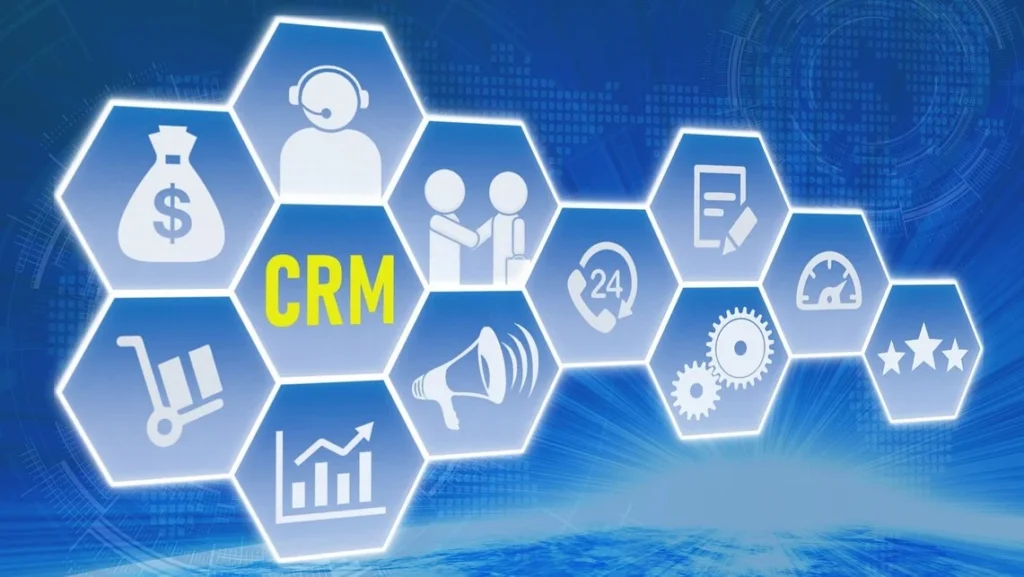Customer relationship management systems is a combination of practices, strategies, and technologies that companies use to manage and analyze customer interactions and data throughout the customer lifecycle. The goal is to improve customer service relationships and assist in customer retention and drive sales growth.
Customer relationship management systems collect customer data across multiple channels, or touchpoints, between the customer and the company, which can include the company website, telephone, live chat, direct mail, marketing materials, and social networks. Customer Relationship Management systems can also provide customer-facing staff members with detailed information about customers’ personal information, purchase history, purchase preferences, and concerns.

Why Customer Relationship Management Systems benefits ?
The use of Customer Relationship Management systems can benefit organizations ranging from small businesses to large enterprises, through:
- Having customer information such as previous purchases and interaction history easily accessible can help customer support representatives provide better and faster customer service.
- Collection and access to customer data can help businesses identify trends and insights about their customers through reporting and visualization features.
- Automation of simple but necessary sales funnel and customer support tasks.
Customer Relationship Management Systems Components
At the most basic level, CRM software combines customer information and documents it into a single CRM database so that business users can more easily access and manage it. Over time, many additional functions have been added to Customer Relationship Management systems to make them more useful. S
ome of these functions include recording various customer interactions via email, phone, social media, or other channels; depending on the capabilities of the system, automating various workflow automation processes, such as tasks, calendars, and alerts; and giving managers the ability to track performance and productivity based on the information recorded in the system.
- Marketing automation. CRM tools with marketing automation capabilities can automate repetitive tasks to improve marketing efforts at various points in the lead generation lifecycle. For example, as sales leads come into the system, the system might automatically send out email marketing content, with the goal of converting sales leads into full-fledged customers.
- Sales force automation. Sales force automation tools track customer interactions and automate certain business functions of the sales cycle required to follow leads, acquire new customers and build customer loyalty.
- Contact center automation. Designed to reduce the tedious aspects of contact center agent work, contact center automation can include pre-recorded audio that aids in customer troubleshooting and information dissemination.
Various software tools integrated with agent desktop tools can handle customer requests to reduce call duration and streamline the customer service process. Automated contact center tools, such as chatbots, can improve customer user experience.
- Geolocation technology, or location-based services. Some Customer Relationship Management systems include technology that can create geo-marketing campaigns based on a customer’s physical location, sometimes integrated with popular location-based GPS (global positioning system) applications. Geolocation technology can also be used as a network or contact management tool to find sales leads based on location.
3 Type of Customer Relationship Management Systems
The four major vendors of Customer Relationship Management systems are Salesforce, Microsoft, SAP and Oracle. Other providers are popular among small to medium-sized businesses, but these four tend to be the choice for large companies. The types of CRM technology offered are as follows:
1. Cloud-based CRM
With CRM that uses cloud computing, also known as SaaS (software as a service) or on-demand CRM, data is stored on a remote external network that employees can access anytime, anywhere as long as there is an internet connection, sometimes with a third-party service provider overseeing installation and maintenance.
The cloud’s quick and relatively easy deployment capabilities appeal to companies with limited technological expertise or resources. Data security is a major concern for companies using cloud-based systems, as the company does not physically control the storage and maintenance of its data.
If the cloud provider goes out of business or is acquired by another company, company data may be compromised or lost. Compatibility issues may also arise when data is initially migrated from the company’s internal system to the cloud.
Companies may consider Cloud CRM as a more cost-effective option. Vendors typically charge users on a subscription basis and offer monthly or annual payment options. However, cost may still be a concern, as paying subscription fees for software can be more expensive over time compared to the on-premises model. Popular cloud-based CRM providers include Salesforce, HubSpot, and Zendesk.
2. On-site CRM
This system places the responsibility of administration, control, security and maintenance of the database and information on the company using the CRM software. With this approach, the company buys a license upfront, instead of purchasing an annual subscription from a cloud CRM provider.
The software resides on the company’s own servers and the user bears the cost of each upgrade. It also usually requires a long installation process to fully integrate company data. Companies with complex CRM needs may benefit from on-premises deployment.
3. Open source CRM
Open source CRM systems make the source code publicly available, allowing companies to make changes at no cost to the companies using the system. Open source CRM systems also allow the addition and customization of data links on social media channels, helping companies looking to improve social CRM practices.
Open Source CRM platforms such as OroCRM, Bitrix24, SuiteCRM, and SugarCRM offer alternatives to proprietary platforms from Salesforce, Microsoft, and other vendors. Adoption of any of these CRM implementation methods depends on the company’s needs, resources, and business goals, as each has different costs associated with it.
Examples of CRM in practice
Examples of CRM usage vary according to the type and purpose of a particular Customer Relationship Management systems.
Contact center
Traditionally, the practice of data capture for Customer Relationship Management systems has been the responsibility of sales and marketing departments, as well as contact centre agents. Sales and marketing teams capture leads and update the system with information throughout the customer lifecycle, and contact centres collect data and revise customer history records through service calls and technical support interactions.
Social CRM
Social media in CRM involves businesses engaging with customers directly through social media platforms, such as Facebook, Twitter, and LinkedIn. Social media presents an open forum for customers to share their experiences with a brand, be it lodging complaints or promoting products.
To add value to customer interactions on social media, businesses use various social CRM tools that monitor social media conversations – from specific brand mentions to the frequency of keywords used – to determine their target audience and which platforms they use. Other tools are designed to analyze social media feedback and address customer questions and concerns.
Mobile CRM
CRM apps built for smartphones and tablets have become a must for sales representatives and marketing professionals who want to access customer information and perform tasks when they are not physically in the office.
Mobile CRM apps utilize features unique to mobile devices, such as GPS and voice recognition capabilities, to give sales and marketing employees access to customer information from anywhere.
And that’s our explanation of what is the meaning of customer relationship management crm systems, hopefully the information we present is useful. if there is something that is not understood, then you can write in the comments column.
